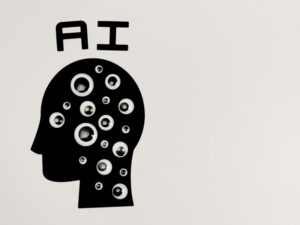As a teacher of English, one uses the word ‘fragment’ in multiple contexts. It could refer to a sentence that is incomplete, often with a missing subject or verb. It could also be a stylistic feature in a piece of creative writing. Often a literary fragment is resonant with what is left unsaid. Poets often write, even publish, fragments of their work; some even argue for the ‘wholeness’ of their verses. Any narrative or literary form that is ‘broken’ or ‘interrupted’ to reflect social reality is often termed a fragment. In the process of artistic creation, the fragment, unbound by rules and conventions, is liberating both for the writer and reader who experiences being ‘in freefall’ (Anne Carson).
Of late, however, I have found myself―I am sure many of us have―less concerned about artistic license than about the fragmentation of attention in our students (and ourselves). On their very last day of school in May 2024, I ran into a group of three Year 13 students in the courtyard; they were waxing nostalgically over what they called their last Watercress pizza and fries! As I wished them good luck for their IB exams, they spoke of how challenging the academic journey over the past two years had been. We chatted about the rigour of Higher Level (HL) courses and how college was going to be a cakewalk when one of them spoke up, only to be joined by a chorus of other students who had by then gathered around us.
The IBDP was not daunting; even the mythic aura surrounding Math HL didn’t worry some of them. What concerned them was the fact that they found themselves struggling to pay attention to any information that did not come to them as soundbites. News digests, often with screaming headlines, were what helped them stay abreast of important world developments and celebrity gossip; reading academic papers, journals and books at university were going to be their challenge. COVID 19, they argued, had impacted their generation not just socially but also affected their ability to focus. The root cause–digital addiction: the result–shrinking attention spans. I was truly humbled by their honesty and candid admission.

The digital universe is here to stay and there would be no point in romanticising a pre-tech world. The temptation, even for us adults, to reach for our mobiles in the midst of a face-to-face conversation, our quest for instant gratification fuelled by a curiosity about what X, Y and Z are doing, saying or wearing, is something that we have all succumbed to at some time or the other. Although much has been written about how alerts from apps, notifications and messages constantly demand one’s attention, I would like to use this blog post to share some thoughts from a book I was fortunate to read over the summer: Jonathan Haidt’s, The Anxious Generation. Calling mobile phones ‘experience blockers’, the book makes a compelling argument to encourage offline activities for children, allowing them free unsupervised and unstructured play, the freedom to take risks, make mistakes and learn from them, so that they grow into creative innovators, critical thinkers and better communicators. Research shows that girls are more adversely impacted than boys by social media addiction: especially in terms of unrealistic standards of comparison (beauty, wealth, holidays, homes, partners, celebrations), whereas boys have been impacted by the lack of reliable friendships and real-life role models.
In an interview, Haidt compared a mobile on a child’s desk as equivalent to having a radio, pager, television or cassette player adorn one’s study desk in the 1980s. The fragmentation of attention is clearly noticeable in classrooms―the collective sigh when students are asked to read a page or two of printed text speaks volumes. A constant diet of short videos, instant updates, bite-sized information, engaging 30 second adverts, causes many of them to feel restless, even bored, when faced with more complex tasks which require patience, sustained attention and concentration.
Helping students manage digital distraction and the fragmentation of attention is crucial to their social, emotional, and intellectual development and wellbeing. Emerging evidence suggests that even vibrations from a digital device or its presence in one’s pocket or on one’s wrist is sufficient to affect cognitive ability. It would, therefore, be unwise to ignore the impact that these devices have on the attention spans of young learners. The implementation of limits to screen time or the setting aside of some hours for quiet reading and study time that is not subject to digital disruption will result in happier, healthier children. The adoption of a balanced approach to technology, by educators and parents, can boost academic achievement. Laptops, iPads and mobiles can be powerful educational tools but only when used intentionally, and for learning.

There’s a new kid on the block, however. Designed to become smarter and savvier than even the most intelligent of human beings within a decade if not earlier, unbridled innovations in the field of AI have generated much excitement, debate and, in some quarters, even distress. AI is bound to change the way we work. While the idea of AI freeing human beings for more creative work is exciting, the impact of AI-generated content that can advance stereotypical biases, false narratives and fallacies is worrisome. Whether AI will eventually lead to greater social cohesion or to further fragmentation of global societies is a question that we are grappling with.
Even as we exploit the ability of AI to function as a democratic enabler of learning in classrooms worldwide, training students to ask more socially-responsible questions, to be more ethical, and more humane, in their decision-making than AI-driven algorithms can or will be, should be the aspiration of all teachers. Whilst schools try to do their best to adapt to the speed of technological advancements, it is imperative that we train students to understand that their choices affect the future.
A future that many educators have defined as now.

